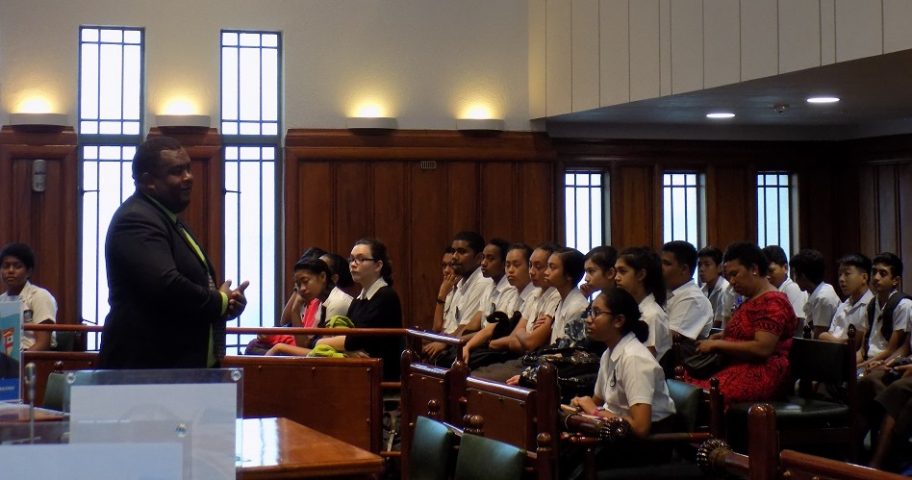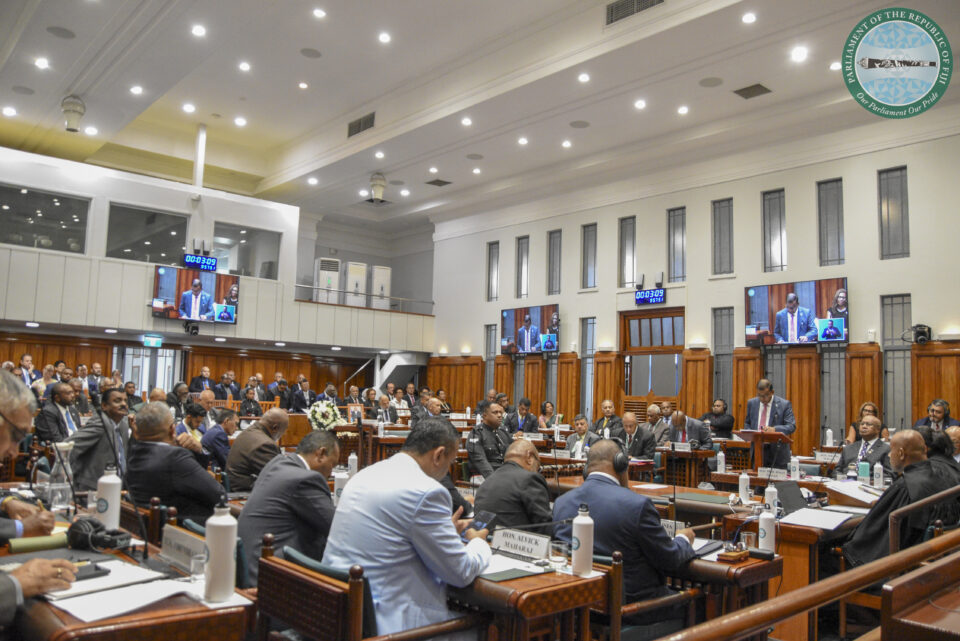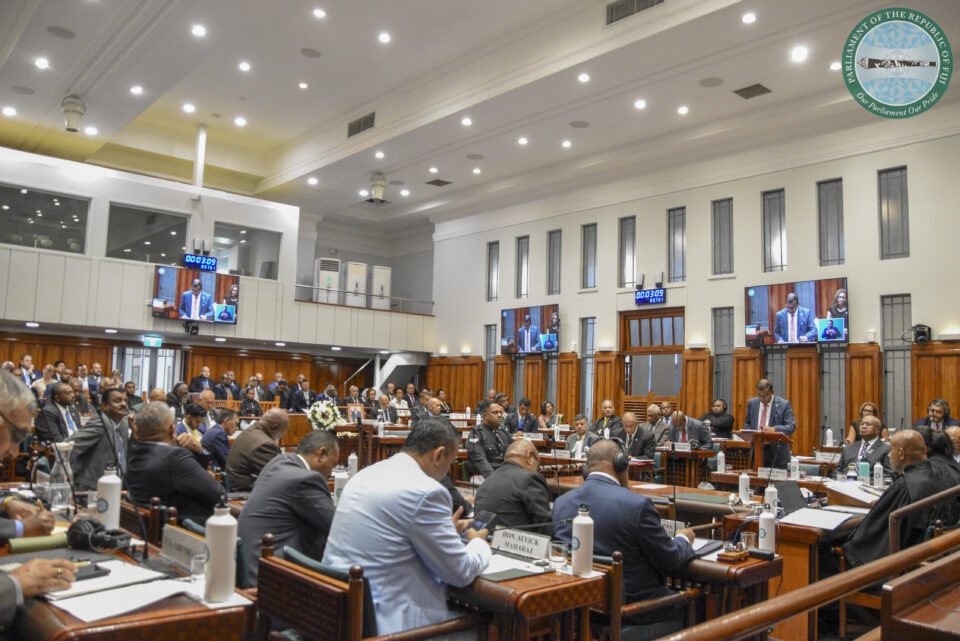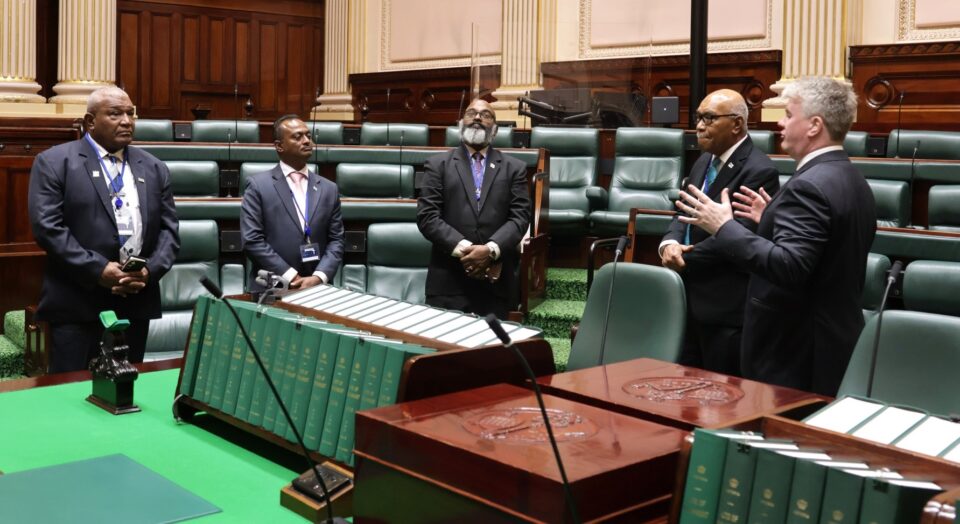Dragging of the Speaker tradition amuses students

Why do Parliaments which follow the Westminster System observe the “Dragging of the Speaker” tradition?
This was asked by a group of students of Yat Sen Secondary School after they watched some videos of “The Dragging of the Speaker” during a short presentation while on tour of Parliament this morning.
Year 10 student Nivandita Chand said while such a tradition was something she saw for the first time, it was also an interesting fact.
She said it was something very unique and for first-timers, people would somehow get the wrong idea about the dragging of any Speaker.
School mate, Tommy Lin also shared similar sentiments and commented that they were fortunate to have learnt a tradition that continued to be practised by some Parliaments around the world to date.
In his brief presentation to the students, Civic Education officer Iliesa Raiduduva said this tradition originate from events that happened from the 13th to the 17th Century in England.
Mr Raiduduva said during those centuries when the Speaker of the House of Commons in England conveyed a message about the meeting of Parliament that was not to the then King’s liking, the Speaker was usually executed.
He said this act continued until about seven to nine Speakers were executed back in England.
“So during the appointment of any Speaker after the execution of those Speakers, Members of Parliament were usually hesitant to take up the role of the Speaker, fearing for their lives,”
“The act of execution stopped but the tradition continued to be practised in Parliaments around the world.”
“To date, many Parliaments still observe this tradition.” Mr Raiduduva said.
The students were also enlightened about the roles and functions of Parliament, among other important things.
Meanwhile, pre-schoolers of Naboro Sawanikula Kindergarten also visited Parliament this morning. They were accompanied by parents and teachers who were on their end of the year tour around the greater Suva area.
Ends






